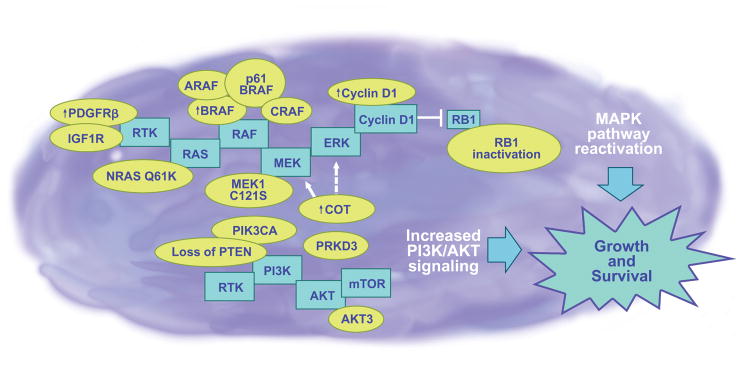Figure 1.
Various mechanisms (shown in yellow balloons) have been defined that can lead to BRAF inhibitor resistance in baseline and disease-progressed BRAF-mutated melanomas and include PDGFRβ and IGF1R receptor tyrosine kinase signaling, secondary NRAS mutations, V600EBRAF amplification, V600EBRAF p61 splice variant, RAF isoform signal switching, C121SMEK1 mutation, COT amplification, increased AKT activity, loss of PTEN, PRKD3, amplified cyclin D1, and RB1 inactivation. The central theme of BRAF inhibitor escape is the reactivation of MAP kinase and increased PI3K/AKT/mTOR signaling (skeleton pathways shown in blue boxes), which leads to melanoma growth and survival. As a further complication to the incredibly diverse resistance landscape, it has been demonstrated that multiple mutations, and possibly others that have yet to be identified, can occur within the same melanoma tumor or cell line, resulting in intratumor heterogeneity. It is expected that the complexity of mutations that can occur within one tumor will ultimately redirect our strategies towards individualized therapy.

